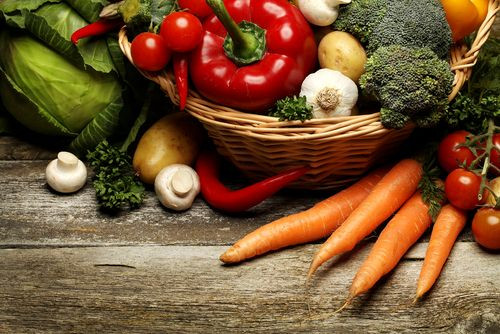How To Eat Organic On A Budget: 6 Ways To Eat Fresher Without Breaking Your Wallet

Eating organic has become a way of life for many people in recent years, as concerns associated with eating processed foods have spurred consumers to shift toward farm-fresh, organic, and conventionally-grown food products.
Organic foods, however, tend to be more costly due to the fact that their supply is more limited. After all, farming only accounts for two percent of global food sales. According to the Food And Agriculture Organization of the United Nations there are also three main reasons why organic foods are more expensive than conventional foods:
1. Greater labor per unit of food due to meeting the Department of Agriculture's (USDA's) standards.
2. Post- harvesting caution: There are smaller quantities of organic food, which must stay separate from conventionally produced and processed food. Therefore, they cost more and use more resources to process and transport.
3. The distribution channels and marketing of organic foods is inefficient, and because of smaller quantities, the costs are higher.
However, this shouldn’t deter anyone from eating freshly grown and raised organic foods. With a little help, you can maximize your dollar when shopping. There are a few things to keep in mind when trying to live an organic lifestyle. You should also be wary of certain terminology. “Natural,” “free-range,” “whole,” and other healthy-sounding phrases do not mean organic. Look for foods that are marked with the USDA organic seal — labeled as USDA Organic.
Tips For Shopping
1. Buy In Bulk
Whenever there is an opportunity to buy an organic ingredient that’s non-perishable, buy it in bulk, especially if it’s on sale. You never know when there will be another sale on the item, and at a discounted price, you’ll be able to get the most for your money. Foods such as pasta, tea, coffee, and canned beans can be bought from many online retailers at a discounted price — reducing their costs dramatically. Sign up for email and online coupons to see when your favorite online store has a sale.
2. Choose Wisely
Buying meats and animal-derived products are more expensive than buying fruits and vegetables. So, if you can only choose between a few items make sure you choose meat, eggs, and milk that are USDA certified. When they're inorganic, these items are usually produced with the help of hormones, antibiotics, and harmful chemicals.
3. Buy Frozen Fruits And Vegetables
If you take a look in your local grocery store, you’ll find that there is a plethora of frozen organic vegetables, even if fresh ones aren’t available. Frozen vegetables last longer. Also, off-season vegetables will have a higher nutritional value if they're frozen during their peak season, and then stored. However, it’s important to prepare your fruits and vegetables in a way that keeps their nutritional value at its highest — steaming vegetables and thawing fruits are the two best ways.
4. D.I.Y. Snacks
Instead of buying a bag of kale chips or trail mix, make them in bulk for yourself. Buying these products prepackaged can be costly. This is also a good way to experiment with different do-it-yourself treats, and you can customize the ingredients to taste.
5. Join A Community Harvest
Buying local foods not only supports small farmers, but can also be helpful if you want to negotiate prices. Look at LocalHarvest.org or the USDA's website to find a farmers' market near you. Be sure to ask your farmer about their growing methods, as well as whether or not they spray pesticides or other harmful chemicals on their crops. Because of the cost of getting USDA certifiied, some farmers opt out of certification to keep their prices low.
6. Grow Your Own Garden
Even if you don’t have a large space, or live in an apartment, you can take a small pot and grow herbs or small vegetables. Doing this not only reduces your cost, it also gives you the opportunity to share them with friends and family members. If you start growing more produce than you can eat, start freezing them. You’ll be able to store fresh vegetables for a few months.



























